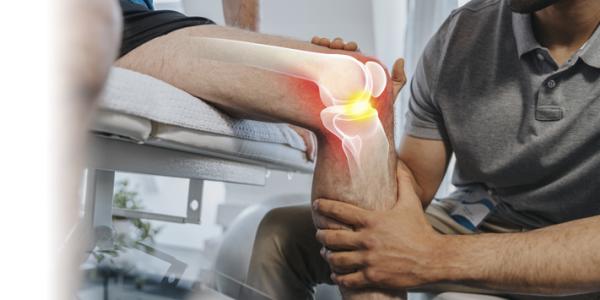
Osteoarthritis just causes minor aches and pains, right? Not exactly. Let's take a closer look at this often-debilitating 'wear and tear' disease.
請點擊此轉換成中文
Unlike rheumatoid arthritis, which is an autoimmune disease, osteoarthritis is considered a 'wear and tear' disease. Osteoarthritis affects over 32.5 million US adults, making it far and away the most common form of arthritis in the world — and a leading cause of disability in the US. People tend to think of osteoarthritis symptoms as minor aches and pains, and just a simple fact of aging. The reality, however, is that it can appear as early as your 20s. It can make it difficult, and often impossible, to do the things you love. In fact, chronic pain associated with osteoarthritis is commonly associated with anxiety and depression.
Keep reading to learn everything you need to know about osteoarthritis and when you should consider visiting your doctor.
Skip
What causes osteoarthritis?
Cartilage is the firm tissue that enables your joints to move without friction or grinding. Eventually, if cartilage wears down, bone will rub on bone — and that's what osteoarthritis is. It affects the entire joint, causing changes in the bone and deterioration of the connective tissues that hold your joint together. This often causes inflammation and chronic pain, making it difficult to engage in everyday activities.
While osteoarthritis is not entirely preventable, there are several precautions that can be taken to reduce the risk of developing this 'wear and tear' disease, including frequent exercise, maintaining good posture and losing weight.
Osteoarthritis risk factors
- Advanced years. The risk of osteoarthritis increases with age.
- Sex. Though the causality is still unknown, 62% of people with osteoarthritis are women.
- Joint injuries. Injuries can increase the risk of osteoarthritis. Even injuries that happened several years ago and seemingly healed properly can increase your risk.
- Consistent strain on joints. If work, sport or other activities place repetitive stress on a joint, that joint is at an elevated risk of developing osteoarthritis.
- Obesity. Extra body weight contributes to osteoarthritis, adding stress to weight-bearing joints. Additionally, fat tissue produces proteins that can cause harmful inflammation in and around your joints.
- Genetics. While an exact pattern has not yet been identified, some people inherit a tendency to develop osteoarthritis.
- Malformed joints. Some people are born with malformed joints or defective cartilage, which can lead to developing osteoarthritis.
- Select metabolic diseases. Certain diseases, including diabetes and hemochromatosis, can put you at an increased risk of developing osteoarthritis.
When to see a doctor
Osteoarthritis is a degenerative, 'wear and tear' disease that worsens over time. Symptoms are often rapid and can result in chronic pain. Joint pain and stiffness can become severe enough to make everyday tasks difficult. It's imperative that you act early to get the proper care.
Watch for these signs and symptoms osteoarthritis:
- Pain during or after movement
- Stiffness and swelling
- Tenderness when pressure is applied
- Loss of flexibility
- Hard lumps called 'bone spurs'
- Grating sensation in the joint
Make an appointment with your doctor if you are experiencing any of the following:
- Any joint symptoms that last three or more days.
- Multiple episodes of joint symptoms within a given month.
At El Camino Health, we offer seamless care, from diagnosis to treatment and rehabilitation. Click Vacinatination page to schedule an appointment today.
This article first appeared in the May 2022 edition of the HealthPerks newsletter.

